A new intervention for Hypermaremma, the festival of the nonprofit cultural association of the same name that has been promoting the languages of contemporary art in Maremma since 2019. This is the first event in the program of the sixth edition of Hypermaremma and it is an intervention, entitled Left & Right, by the duo Claire Fontaine, formed in 2004 in Paris by James Thornhille Fulvia Carnevale (since 2017 the two artists live and work in Palermo: they made all of Italy talk at the last edition of Sanremo for their work Pensati libera worn by Chiara Ferragni). The work is meant to be a farewell to the old year and a welcome to the new one coming, and was created by Claire Fontaine following research on the most commonly used ’emoticons’ with the intention of placing theobserver in front of a sign representative of a new language of humanity, capable of encapsulating, within simple stylized messages, a mood, an emotion or an expression that no longer needs the medium of words.
To transpose the history of ’emoticons’ within an artistic research means to transform immediate symbols into international words, thus overcoming the language barriers generated by different idioms and giving birth to a new global form of expression. Through the mimicry of icons that occupy the visual and private sphere of those who daily encounter the language of the Web, on the occasion of the opening of the sixth edition of Hypermaremma, the artists make available to the Maremma territory a message that is intended to have a strong interpretive impact, placing the work on the top of a hill in the grounds of the Stendardi Farm, where an incomplete architectural structure intended for rural use lies. The light work is thus intended to become an otherworldly message suspended in the void, during the night hours, and a subliminal message that emphasizes the remnants of human intervention on the planet, during daylight hours, activating, once again, a dialogue with nature inherent in the mission of the Hypermaremma project.
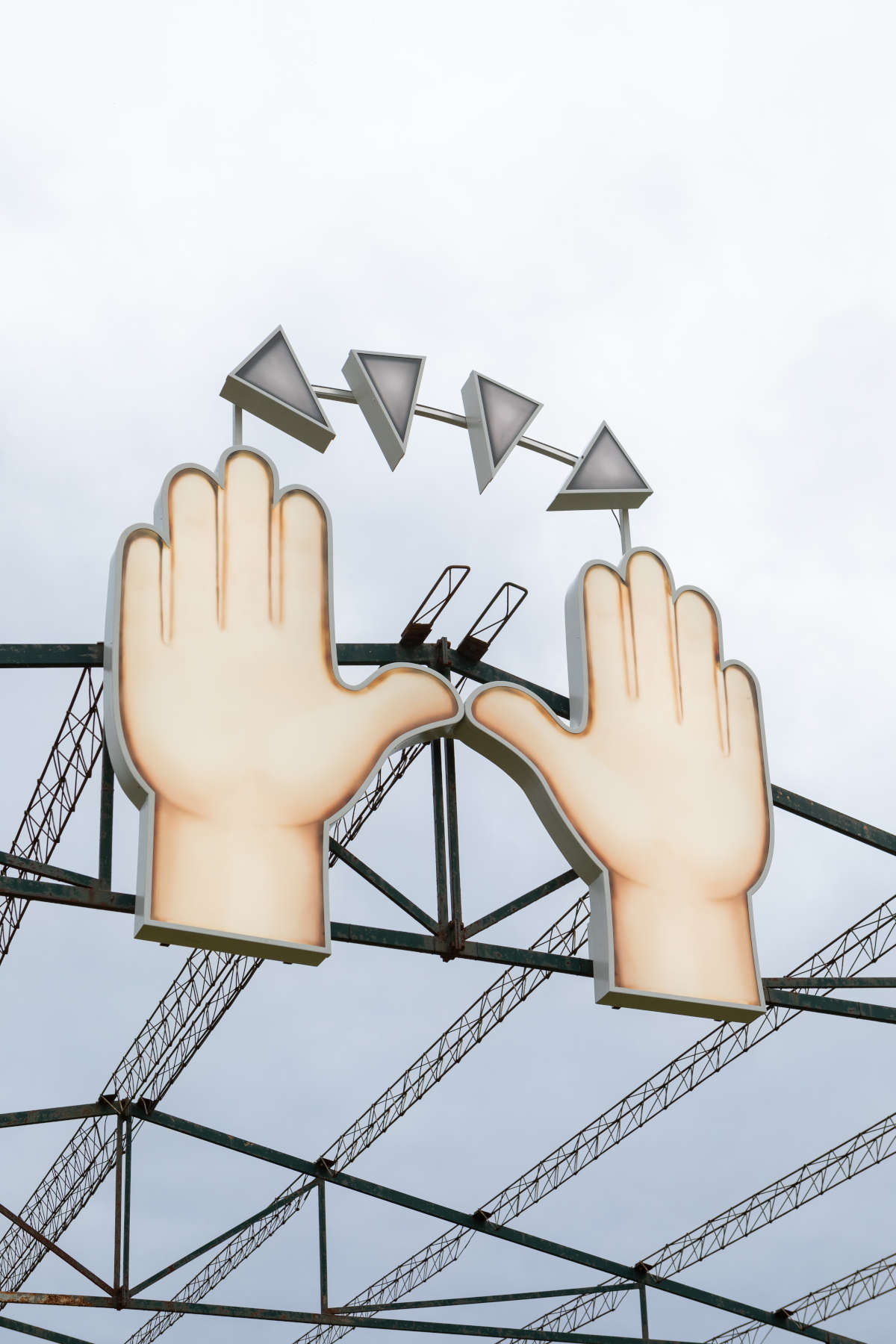
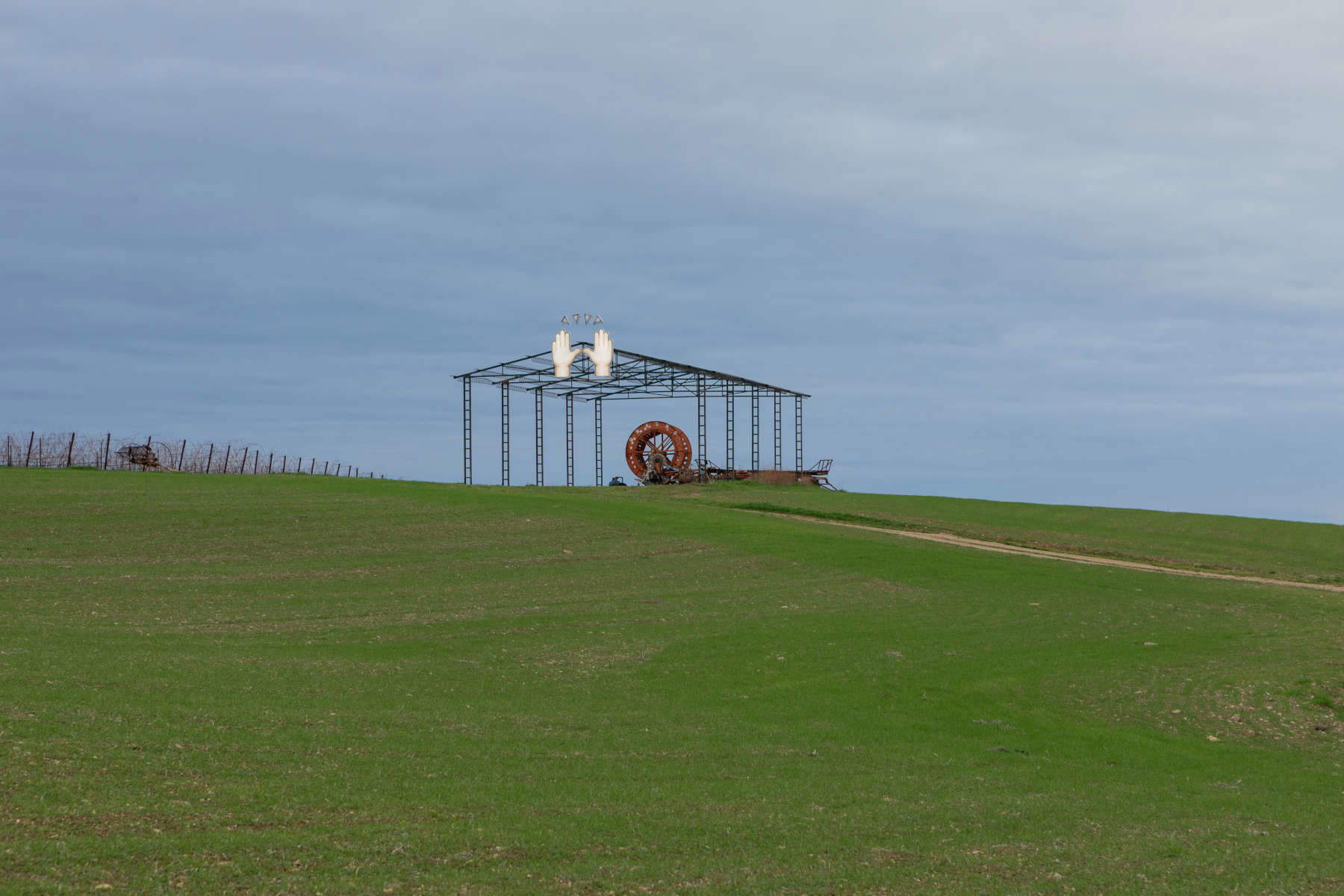
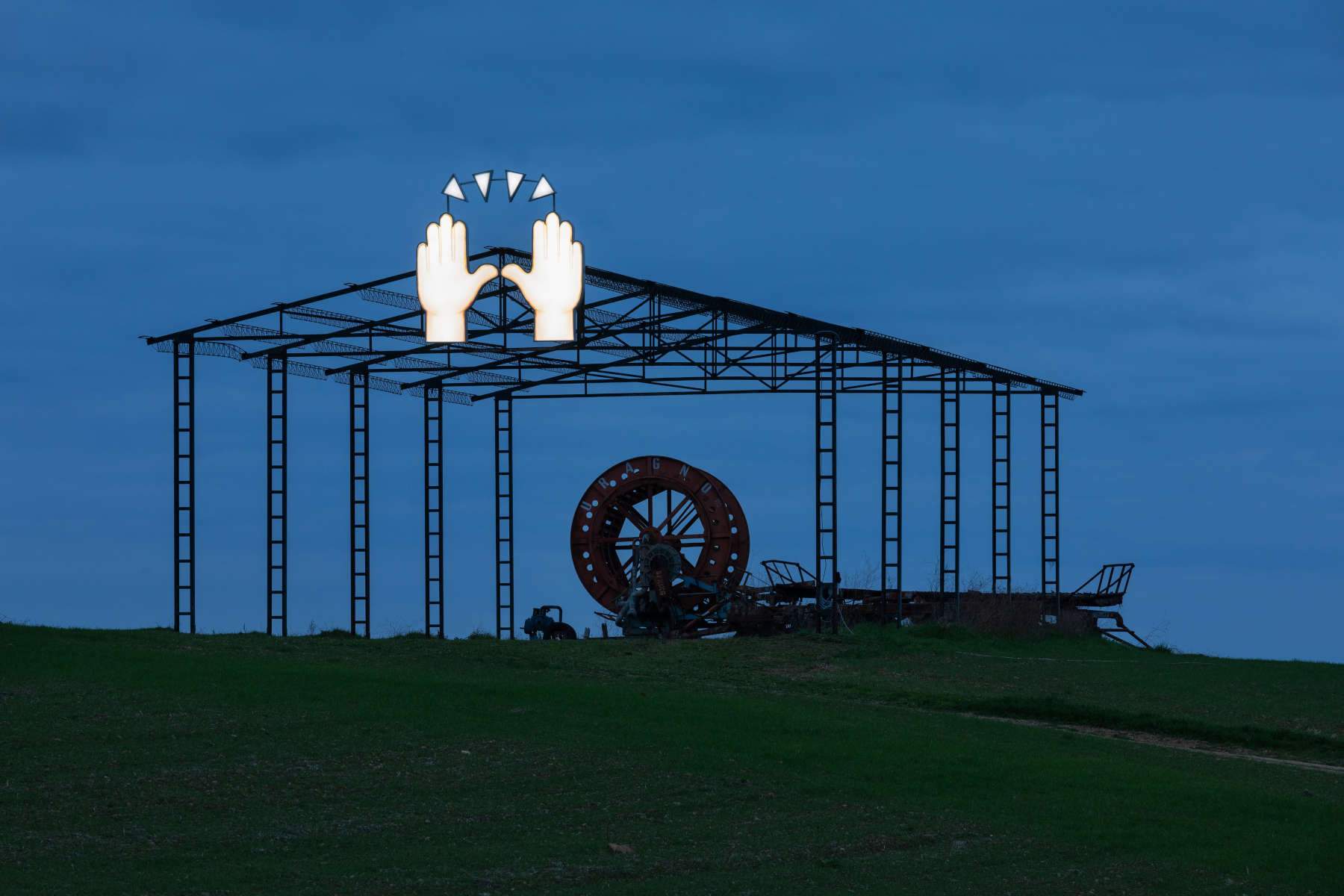
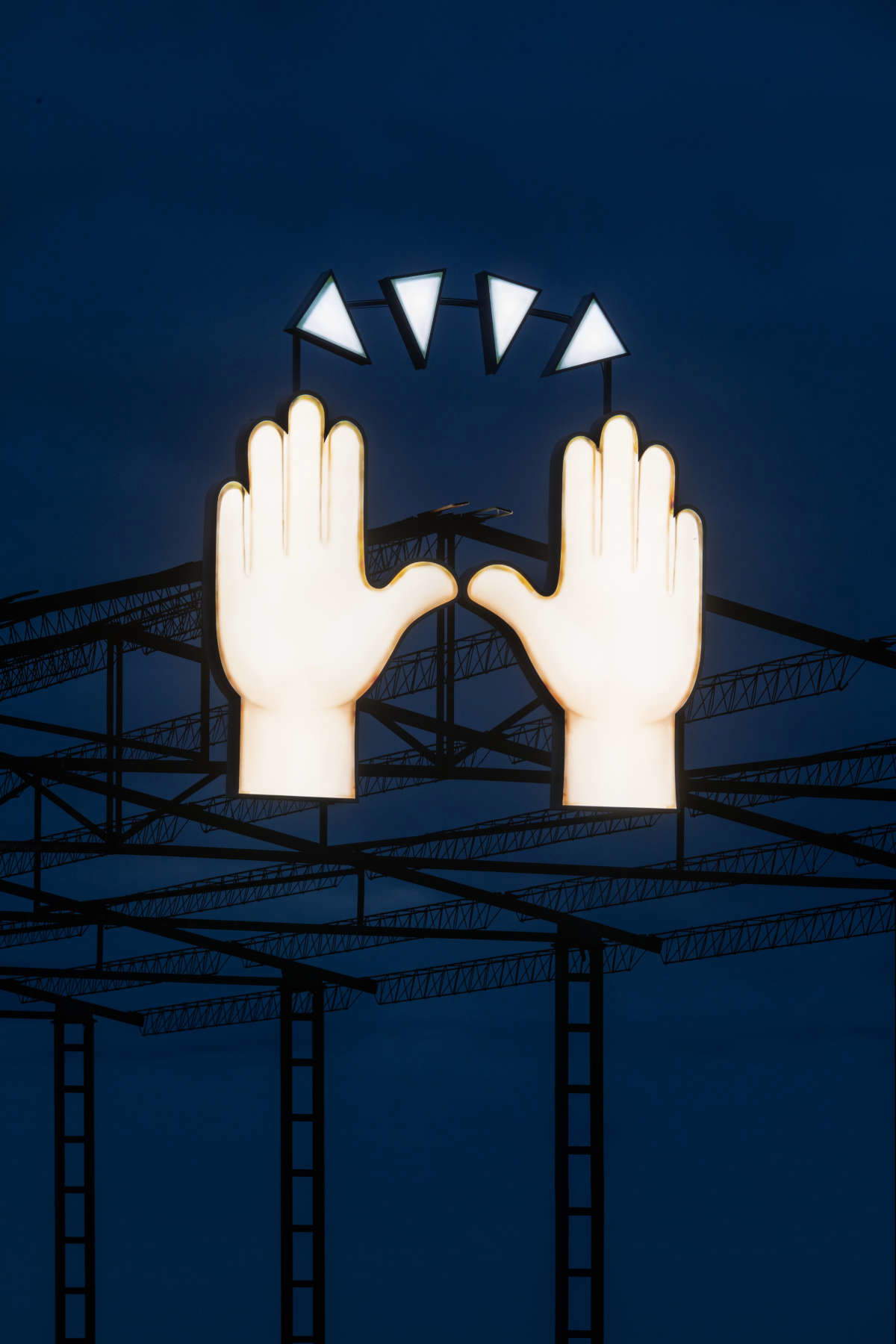
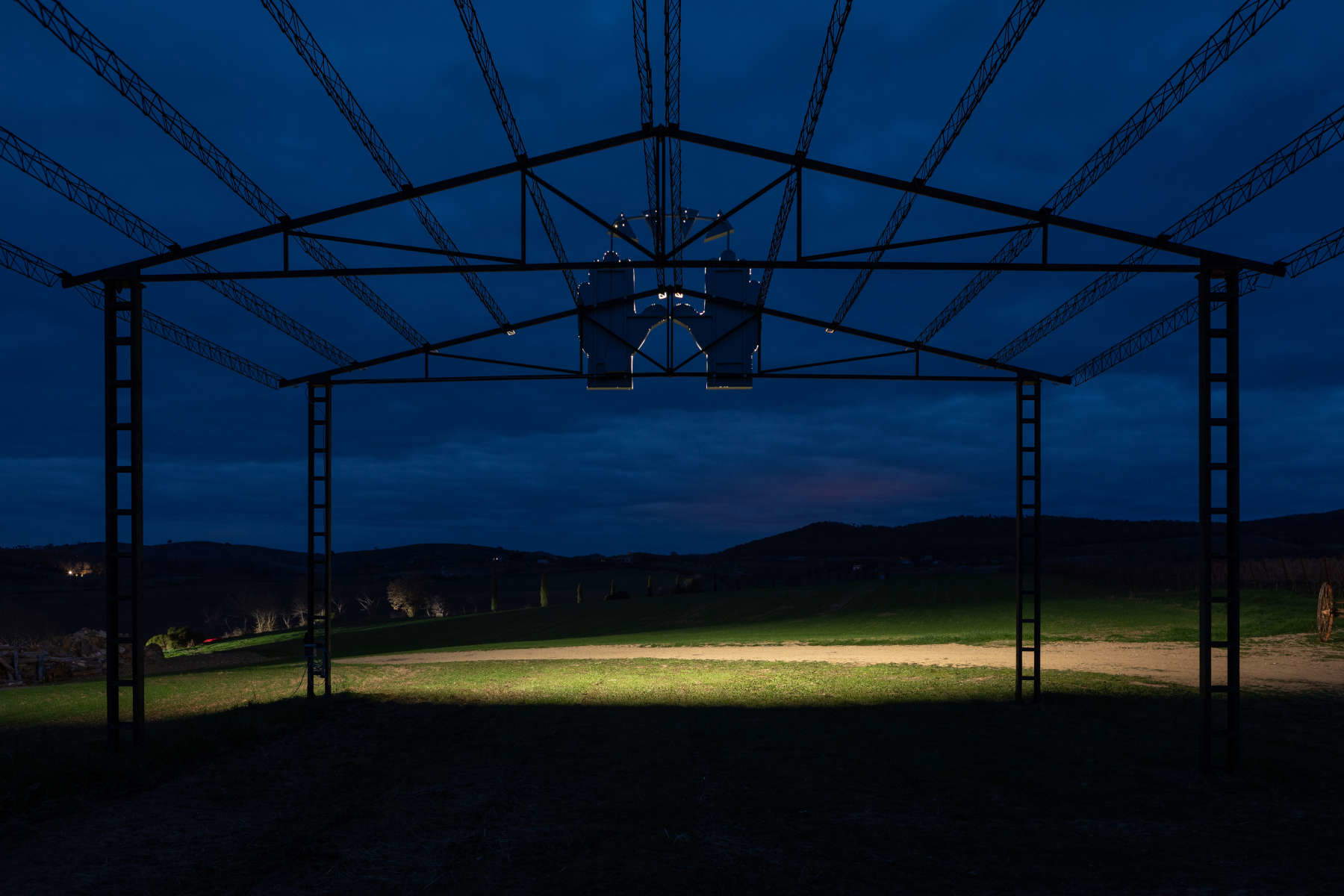
To explain their work, the Claire Fontaine duo starts with Duchamp: “The infra-subtle is something you can barely perceive,” they state. "According to Duchamp, it is the potential of the ordinary object that allows the artist to transform it into ready-made. The infraordinary according to Perec, on the other hand, is what makes the everyday wonderful; it is the mundane, the opposite of the exceptional. To prove this, Perec collected and transcribed texts from postcards bought at flea markets. As singular and different as each person’s vacation was, the words used to describe them, in the tiny space of the card, were practically always the same. If we picked up the messages in our cell phones today we would probably have a very similar experience. Words still seem just as inadequate, now as then, to faithfully describe our emotions in the absence of the body and voice. In fact, partly for the sake of brevity and partly out of modesty, we prefer to resort to prefabricated (literally ready-made, ready-to-use) designs: emoji. [...] Instead, the first set of emoji,176 faces and objects that are ancestors of those we use today, was created in Japan in 1999 by Shigetaka Kurita (since 2016 it has become part of the Moma collection). In our digital lives we have now learned to appropriate these ready-made metonyms of emotions, the same for everyone but singular to each life, just as we did for verbal language. The words to say ourselves are the same for everyone, and the reason we understand them is precisely that they belong to everyone, are common heritage and the object of continuous exchange among anyone who shares the use of a language. Our simpler, more immediate experience of the common as a vital resource now extends for the first time to ready-made drawings: emoji are our hieroglyphs, pictograms for describing the spiritual and the trivial."
Claire Fontaine thus transforms the palm emoji into a light sculpture. Left and Right (2023) in fact reproduces hands raised in a sign of approval or surrender. An ambiguous gesture, often used to say “you can’t do better” in digital commentary, in material life it is instead made by those who shy away from discussion, struggle or want to stop someone. “In times of war,” the artists conclude, “this form - as familiar on the phone screen as it is mysterious in physical space - inevitably leads us to question surrender. If war is nothing more than a potentially endless cycle of revenge, surrender, far from being an act of cowardice, is the only way to stop the violence.”
 |
| A giant hand emoji in Maremma: it's Claire Fontaine's surgery |
Warning: the translation into English of the original Italian article was created using automatic tools. We undertake to review all articles, but we do not guarantee the total absence of inaccuracies in the translation due to the program. You can find the original by clicking on the ITA button. If you find any mistake,please contact us.